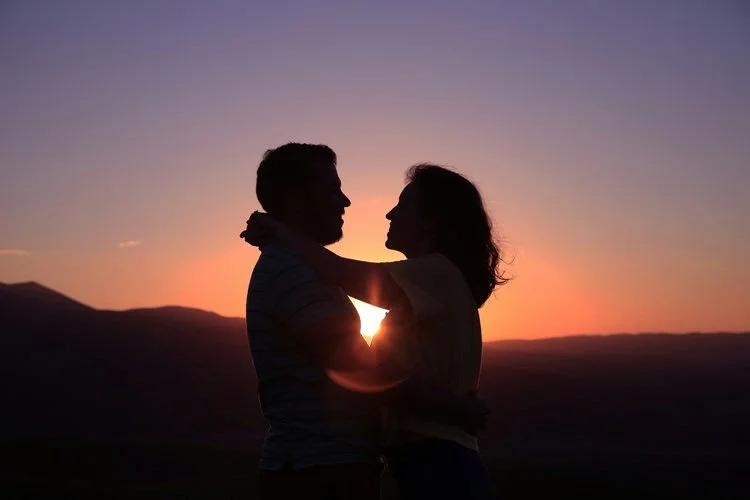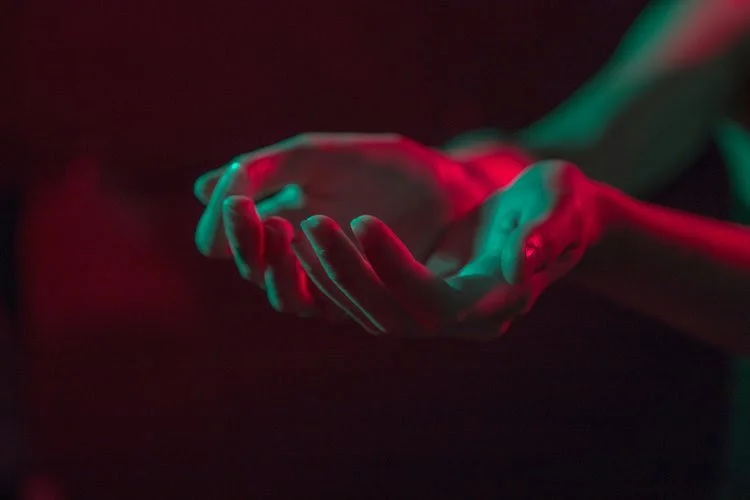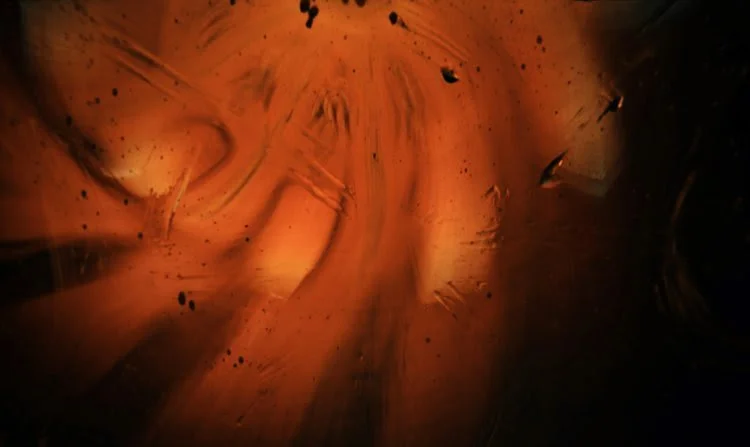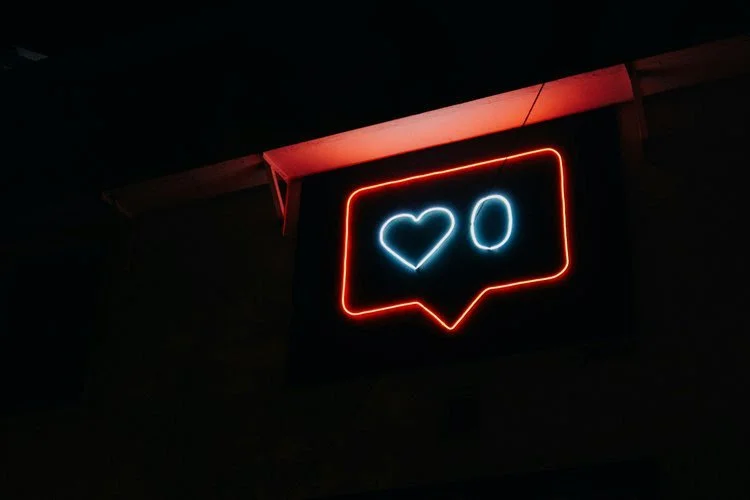A Look Behind the Love “Bath” Curtain: How Deep Can Your Love Go?
When we distill all of the science, randomized placebo-controlled trials with statistical analysis, the anecdotal reports, and experiential musings, it becomes clear that it all boils down to love.
The language around love and how we speak about love is in dire need of clarity and revamping. Love is a conscious and intentional process, an act of co-creation when a commitment is made between partners. Love cannot be denied, it can only be ignored, hidden, or forgotten. The path to love is the path to remembering our value, our sense of connection, and our shared humanity. Love as a co-creational container reminds us that we have the chance to illuminate and heal wounds, reinvigorate love and compassion, and most importantly, restructure the foundation and tools both parties need to continue their expansion. Love, co-creation, and relationships are about continually finding ways to go deeper.
When we introduce psychedelic medicine into the sacred container of love, it helps us to expedite intentions, to regenerate and restore or maintain the integrity of our relational ecosystem, individually and collectively; one that is composed of three entities: you, me, and us. Many psychedelics bring individuals into a deeply introspective space, which feel isolating from their partners. However, there is one that is unique in its properties and potential…MDMA.
MDMA, known colloquially as either molly, ecstasy, or X, has been used both in the underground rave world and recreationally to enhance pleasure during intercourse. Ironically, for anyone who has taken MDMA and attempted intercourse, you may find reaching climax difficult if not impossible - but, more on this later. In a 2022 qualitative study, Evenings with Molly: Adult Couples' Use of MDMA for Relationship Enhancement, “couples described positive effects on communication, intimate bonding, and providing a relationship "tune up," among other durable changes to the relationship.”
“Ironically, for anyone who has taken MDMA and attempted intercourse, you may find reaching climax difficult if not impossible…”
A few important notes about MDMA. Since MDMA is schedule I and not federally regulated, there is no guarantee when someone acquires MDMA they are in fact getting MDMA. MDMA happens to be one of the most adulterated medicines out there, with some reports historically showing less than 30% of substances tested as containing MDMA. Common adulterants to MDMA include methamphetamine (speed), caffeine, ketamine, fentanyl, and many other substances. Even today, samples tested through Erowid consistently show MDMA mixed with other substances or no MDMA at all. This is important to note for a few reasons: 1) adulterated MDMA is responsible for prolonged side effects after consumption, 2) increased health risks by using unverified sources of MDMA, and 3) dosing cannot be guaranteed. The term “Suicide Tuesday” refers to the difficult come down symptomatology commonly attributed to serotonin (5-HTP) depletion after Friday and Saturday dance and music festivals. This has led to many threads and sites promoting a wild array of “pre-roll” and “post-roll” supplementation protocols after MDMA use, however, there is no data to back any of these practices up. Using clean, verified, uncontaminated medicine with appropriate dosing schedules is the best practice to avoid this period of depletion, which sometimes still cannot be avoided due to its biochemical nature.
Let’s also differentiate therapeutic vs recreational use here. Recreational doses of MDMA can often range from 200-300 mg per dose, whereas therapeutic dosing typically starts around 120-125 mg as a loading dose followed by 60-75 mg as booster doses. High recreational doses of MDMA, taken multiple times over a night, is enough to create the excessive depletion of neurotransmitters and the increased risk profile attributed to water intoxication (hyponatremia) and cardiovascular strain. Safety in the approach and the space has to be the priority in therapeutic work. There are several mechanisms of MDMA that make it a remarkable medicine to use in relational containers. One, it downregulates the amygdala (fear center), which helps talking about and processing uncomfortable topics, traumatic experiences, and anxiety-provoking content within the relationship. Two, it increases oxytocin (aka “the love hormone”) which enhances feelings of closeness, connection, intimacy, and love. Three, it increases levels of dopamine (motivation), serotonin (pleasure), and norepinephrine (alertness and arousal), all of which increase the propensity for couples to dust off the relational cobwebs and feel joyful in their relational house.
Take heed, these biochemical and neurobiological mechanisms can also be used as tools of exploitation. Taking medicine like this in an unsafe, uncontained environment puts people at risk. The same mechanisms that increase vulnerability, closeness, security, and safety also compromise the ability to provide coherent and informed consent or identify manipulations. Boundaries may be more difficult to uphold and enforce. The enhanced stimulation of the senses and created vulnerability can turn rapture into regret once the medicine wears off.
“Take heed, these biochemical and neurobiological mechanisms can also be used as tools of exploitation. Taking medicine like this in an unsafe, uncontained environment puts people at risk.”
Within the psychedelic community, MDMA is commonly referred to as a “heart opening” psychedelic medicine - for many of the reasons above - which does in fact hold tremendous potential for healing the self and the “us.” MDMA provides a sense of increased joy and pleasure, and thus a tool to re-discover and explore sensuality, connection and presence. Christina Caron for The New York Times wrote about how for many couples, MDMA was the, “only thing that worked.” There are many couples who share this same experience, but it’s important to be transparent that like any medicine, there is no shortcut. Using psychedelic medicine (under the supervision of a skilled expert) for the benefit of your relationship is not a one-and-done deal. It is one tool to add to your emotional relational ecosystem, but it is equally important and imperative to integrate new language, compassion, empathy, and clarity into the relationship when conflict, misunderstanding, or disconnection perpetuate. Even for couples who are not experiencing conflict, refreshing and reinvigorating your love life is a conscious act of commitment, a re-choosing of your partner, and a declaration of your intentions to love yourself and them deeper.
Now, let’s talk about a unique 8-hour psychedelic healing experience and journey I have developed for couples called the “love bath.”
As a disclaimer, all psychedelic healing journeys under Soul Surgeon MD require a consultation to determine candidacy. A Love Bath is something to consider after the screening and intake. It’s meant and provided for specific clients who meet certain qualifications (non-abusive, responsible consenting parties). With that being said, let’s pull the curtain back and discuss what exactly a Love Bath entails and how many clients have benefited from this experience.
The Love Bath starts with an initial loading dose high enough to engage the compassionate heart-centered response and not too high to create feelings of dissociation. The loading dose is then supported with booster doses given at set and adjusted intervals, depending on the unique response to the medicine. This is an extremely important detail in an 8-hour long journey, and cannot be standardized to every person or situation.
The first hour typically involves addressing any unnamed fears, sharing individual intentions, and creating a collective intention together. It is a chance to identify growth edges, perpetual conflicts, recurring challenges, and create clarity for the journey. The initial dose and the first booster dose are guided with professional support, and then the facilitator leaves the container to allow for the exploration of intimacy in any way and shape couple’s feel inspired to. This process is about deepening intimacy so we recommend keeping the “heavy processing” to a minimum. (If there are deeper wounds to address and repair, then a love bath is not the first step. Instead, I recommend a fully supported couple’s session with one of our skilled facilitators). Couple’s are encouraged to focus on what they cherish and love about one another. Revisit love maps, ask open ended questions, explore individual and collective desires. It is an opportunity to revisit and revise the culture of your relationship - the relational terroir, if you will. This is about constructing or re-constructing shared meaning. Revisit how you met, what you like about each other, and what you want to create together. Re-ask the questions you think you know the answer to. Over time, you will be surprised how these answers change - ironically we as people change with time. Explore old shared goals and be willing to create new ones. The co-created container already exists between a couple. This provides an opportunity to safely revitalize it through the shared intention to play, explore, heal, and grow.
And yes, Love Baths provide an opportunity to enrich sexuality by reconnecting through physical intimacy, if this is an avenue the couple feels comfortable with, but it is not always the main avenue to do so or necessary at all. This decision is made before any medicine is in the system when informed consent is still possible. We know that safe, consenting, and engaged intercourse helps us deepen our emotional bonds and sense of commitment, but intercourse should not be the goal. There is a rich opportunity to explore physical intimacy and sensuality in new ways. Slow down, take your time, and don’t focus on any objective. Just as open-ended questions and exploring “old” terrain can be eye-opening, so can re-experiencing your partner as if it were the first time. This experience offers us a sense of nurturance, support, security, and confidence. You may be surprised to find how sexually enriching engaged conversation, true presence, emotional connection, and intentional touch can be for both you and your partner.
“And yes, Love Baths provide an opportunity to enrich sexuality by reconnecting through physical intimacy…”
Personally, the Love Bath was an opportunity for me to heal some of the sexual abuse and shaming I had experienced in my life. We’ve helped clients who deeply loved one another work through the rigidity or frigidity of their sexual dissonance. With the rampant availability of high-definition, graphic pornography, it can offer an opportunity to explore and heal one’s sexual template, which may become distorted and perverse from endless novelty and modeled violence. Clients routinely experience and explore a new depth, expansiveness, and playfulness within the security of their relationship. Perpetual conflicts typically get resolved due to the enhanced clarity and shared understanding discovered within the container. As these obstacles get resolved, the entire environment for the relationships begins to thrive. Love and light are allowed to shine, unobstructed and mutually supported.
Lastly, I would like to leave you with a testimonial from one of our participating couples.
“We are grateful for the connections you facilitated. Not only did you guide us toward healing the wounded parts of ourselves, but you also deepened our connection to each other. Even today, tears of gratitude well up within me as I reflect on the safe space you created for our wounded hearts, allowing us to rediscover the love within ourselves. This newfound awareness has enabled us to look at each other with profound understanding, gratitude, and love like never before. In this sacred space, we learned that being emotional does not equate to fragility. We have discovered our strength, giving ourselves permission to acknowledge and process our emotions. The transformation of our minds is truly awe-inspiring” - Past client
Social Media & Censorship in the New Psychedelic Age
Either from his latest release, ‘The Anxious Generation’, or from circulating clips from his appearance on the Joe Rogan Experience, many of us are at least familiar with Jonathan Haidt’s fundamental message and mission around social media usage for children and adolescents, and their unrestricted access to a virtual world through personal devices. His book and perspective has been an incredible driving thought catalyst around social media, technology, and access, as well as intricately linked topics such as technology responsibility, accountability, and censorship - not just for our children, but for all of us.
It makes me think about how big tech views and implements censorship on social media platforms that are designed to be addictive and trigger the same chemical reactions in our brains as drugs and other potentially addictive habits, such as gambling and pornography. The most at-risk to this dopamine hijack is, of course, the still very much developing and vulnerable minds of our youth. The term “iPad kid” may just make its way into the Oxford dictionary soon.
The lack of accountability, responsibility, and context in the virtualscape means that impressionable minds are left to discern for themselves between fact or fiction, truth or lie, information or manipulation. The endless trove of content seems to be impossible to sift through and deem harmful or illegal. So when we talk about censored content today, we’re talking about content that meets programmed criteria (yes, we’re back to “the algorithm”). Both the images of a new mother breastfeeding and the image of a topless sex worker would likely both have their post taken down and their account shadowbanned, or in some cases, their accounts deleted without warning.
Confession time. I, too, have been shadowbanned on instagram because of “drugs” aka the use of the words psychedelic, psychedelic medicine, ketamine, psilocybin, MDMA, and so on. Of course when I’m posting or sharing information about my line of work, I’m using these words in the context of education, research, science, safety, healing, and access to care. But because of censorship policies, my content falls into the same parameters as those using the platform to illegally sell or irresponsibly promote psychedelic drug use.
While finding ways to circumvent these censorship filters are annoying and feel a little silly (for example typing p$ych3d3l!cs like you would back in the early 2000s on AOL messenger), we have to remember that social media can be a tremendously valuable tool to share information and create accessibility to like-minded communities all over the globe. We should advocate for better digital health protocols for our children, just the same as we should advocate for better censorship policies around psychedelic medicine.
Colorado was recently at the center of a controversial new senate bill, SB 24-158, which promised a safer online user experience for minors through effective age-gates and user data privacy, but somehow managed to also integrate sweeping government oversights and the threat of prosecutorial abuses through surveillance and censorship of online content. Subjects such as psychedelic medicine would have been collateral damage, compromising the ability to ascertain educated, responsible, and necessary information about these medicines, their potential, and the healing practices around them. For all strides forward, we may have inadvertently found ourselves traversing familiar terrain vis-a-vis the “war on drugs” stigma of the 70-80s. Fortunately, the bill failed to pass Colorado’s legislators. While I agree we need new policies, I’m not sure intrusive and oppressive surveillance is the answer. I might suggest more pressure be placed on big tech versus the user.
We have to remember, this is still new territory and because it isn’t going anywhere anytime soon, it does require of us all (organization and citizen) to carve out better standards - like Jonathan Haidt informing the world about the reality of social media on our children’s brains, like ACER Integration recently holding a discussion panel about censorship on psychedelic harm reduction and policy reform, like 16-year-old Keegan Lee who authored ‘60 Days of Disconnect’ and like the non-profit organization, Global Day of Unplugging providing and developing new tools for digital hygiene. We don’t have to simply accept the impact of social media and censorship, we can create new rules that fit our new world by acknowledging the complexities of context, nuance, and discernment.




